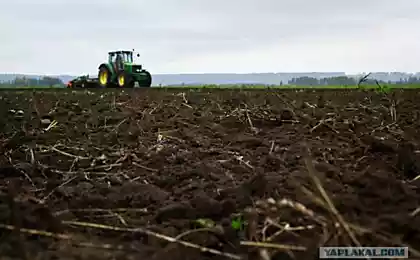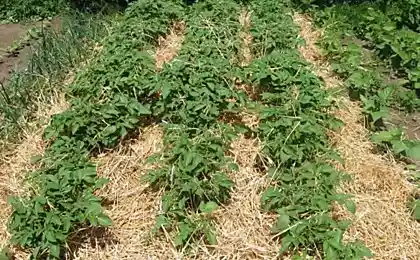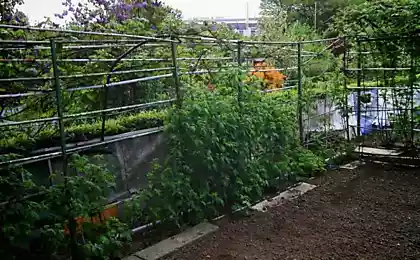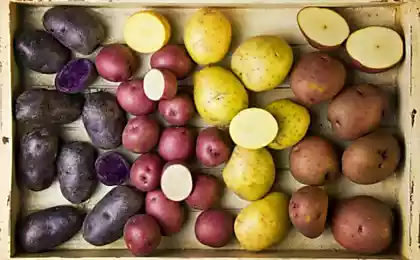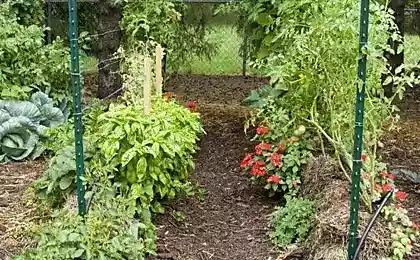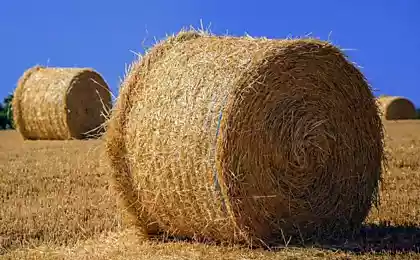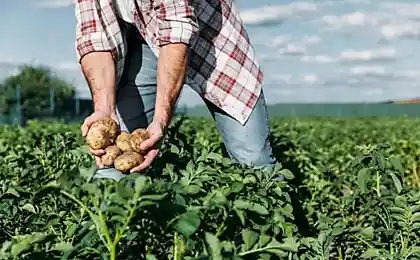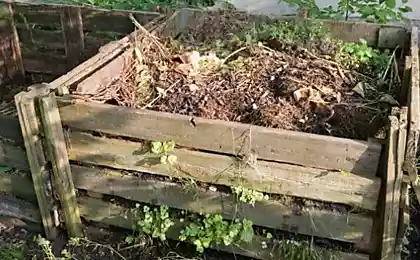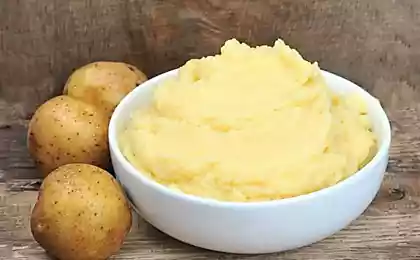828
Unusual ways of planting potatoes in a barrel,bag,under the straw

Early may in our area is the traditional time for planting potatoes. So it's time to think how
to put it this time, because the last time to the usual methods of adding new, original — there are plenty to choose from.
The traditional ways of planting potatoes.The usual three methods: smooth landing, ridge, and trench.
Moreover, this is the case, when the random choice gives better results, because each of the options is designed for very specific conditions and others simply can not justify itself.
General are only basic requirements: to have the landing in the direction from South to North, the plants were covered evenly and has a sufficient amount of light; observe distance. In addition, don't forget about the fertilizer (I usually use ash and compost); it is useful to add in the holes or trenches onion peel, which protects the plants from Colorado potato beetle.
The recommended distance between tubers at planting
Between the rows of potatoes:
- for early varieties — 60 cm
- for late varieties — 70 cm.
- for early varieties is 25-30 cm
- for late varieties — 30-35 cm

Optimum planting depth:
- on light soils — 10-12 cm
- on heavy and loam — 8-10 cm
- on clay soils — 4-5 cm.
- Again, small tubers should be planted not so deep as large (but in any case, deviation from the recommended settings, more than 3 cm not recommended).
Ridge landing. This is the way in which the plot is suitable for planting potatoes, make ridges with a height of about 15 cm with the distance between them is about 70 cm, and then they put the tubers. Appropriate technology where close to the surface ground water table, the soil suffers from waterlogging. Useful method and on heavy soils that are quickly compacted, preventing air exchange. In practice, the ridges sometimes used just because there is a tractor.

For example, in the village, where I had a cottage, all plowed land for potatoes the tractor.
And since the tractor was and the necessary facilities for earthing up, planting in ridges — to reduce
to minimize manual labor. This idea has been abandoned, at least for us and loam: in dry years, such
ridges the moisture away very quickly, and requires abundant watering.
Planting potatoes in trenches. It is, in fact, the ridges of the opposite: on sandy soils, poorly moisture-retaining, but also in the arid climate we don't raise the tubers above ground level, but rather deepens, laying in trenches, laid with all the recommended distances.

Of course if you use this method in areas with high humidity or very dense soil,
there is a risk that our potatoes just suffocate or rot in wet soil.
Smooth landing.If you went to the site on the southern slope, where the soil warms up quickly, and the soil is fairly loose
and a measure of water-holding capacity can be planted by the "turn a shovel." It is most convenient to do it together. Outlines rows
future landings, then one of the participants in the process, moving along the intended line, make a small hole (someone just lifts the layer of the earth, to lay him under the tuber, someone prefer the hole — then soil
of the following "landing point" is filled with the previous one). The second follows and lays out the tubers.

Planting potatoes under straw. This method has recently become more popular. In principle, there are
reasonable cause: the effort with this method of growing potatoes takes less than when using traditional approaches. Has its drawbacks, of course — but it should be understood the same as when one of the usual ways: in different conditions, the same option may give different results.
In short, the essence of the method is that the potatoes instead of soil close to a thick layer of straw, adding it to the growth of the shoots. For reviews, it turns out potatoes are large, clean, clean it very comfortable.

Skeptics note that the straw holds the water is worse than earth, and therefore, in a drought to water will have more and more abundant, and more — in the straw can stay on the mouse. But I think here discussion is unreasonable — you should try to make sure suitable this method or not.
Planting under straw is good to use on virgin soil: dig in this case, nothing will, but none of the weed through the straw will not break, and next year you will receive a land, quite suitable for further processing.
Used this method on heavy soils — first of all, again, eliminates digging for planting,
and secondly, if after harvest to mix the straw residues into the soil can significantly improve its structure, to loosen.
Alternatively, the potatoes can be spread out on a flat surface, and small holes, helping to preserve moisture.
Another option — instead of straw to use grass clippings (the only obstacle: the time of planting potatoes we have, for example, has no grass in sufficient quantity).

Another variation on the theme (it experienced my neighbours at the cottage and was pleased with the result): grass Bush potatoes poured on top (tops is not going in a pile, as in conventional earthing up, and is decomposed by the bed).
It is clear that this will require more space, but the harvest for reviews, happy.
Hassle especially not grown potatoes — you put the newly cut grass and weed the weeds so that only the tops of the shoots sticking out. Planting potatoes under black film. Option — a nonwoven material (also black). The method is incredibly simple: the film (material) is spread on the selected area (pre-dug and laced with humus or fertilizers),
it is securely fixed to the wind blew, and the markup made cross-cuts (in a checkerboard pattern and rows).
Then it only remains to choose the ground under each slit, forming a hole (the depth depends on the soil structure)
and lay the tubers, removed prisypaya soil. That's all — no weeding, no hilling technology does not provide.
The method used most often for planting early potatoes — it allows you to harvest faster.
Say, and the number of tubers increases, and quality. But the method is not suitable for all regions: in hot climates the earth under the film overheats, and our planting material is just "bake".

Planting potatoes in boxes. It will require rather time-consuming preparation, but then the care is minimized. Constructed boxes-containers (warm beds) of the material at hand. Dimensions: height — 30 cm, width of 100-120 cm, length on desire and opportunities. The passages between the ridges — 50-80 cm in width. Boxes, like warm beds, filled with organic matter, and then they planted the tubers in a checkerboard pattern (two rows, 30 cm).Say, potatoes with this method of cultivation produces many times more than conventional methods, and care (hoeing, weeding) is required. The beds can be used more than one year, if you add organic matter as the soil settles, and after harvest to sow a green manure box.

Potatoes in barrels, bags, buckets... the Essence of the method is that a certain capacity is installed in a well lit area and is filled with fertile soil and planted potatoes. The method has variants. Sometimes offer to make holes in the tank sides and planted potatoes in them. Sometimes — to lay out planting the tubers on a small bed of soil, covered with soil, and then add the land the growth of shoots (so, say, you can even in several rows to plant potatoes, if capacity allows).
Potatoes in mounds.Here instead of the usual long rows assumes the construction of rolling hills or mounds. For this purpose, the treated soil outline of a circle of 2 m diameter. On the circle make holes at a distance of 25-40 cm from each other and lay them in the tubers. Planting material is sprinkled with soil, and then grows leaves, Spud the potato, forming a hill. In the middle of it should do the hole-"crater" for irrigation. According to reviews, this method help with a small area to obtain a fairly high yield.
Source: www.7dach.ru


